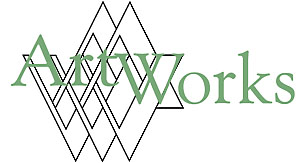
 |
Summer 2002 |
|
•Radio series offers •The Griffin & the Minor Canon •How can I help students in my |
Mentor shares art and lifeBy Bonnie Fuoco Art is what we want it to be. For Caroline Smith, a Lewisburg potter and mentor for Lewisburg’s WE CAN (Working to Eliminate Child Abuse and Neglect) program, art was a way to pass on a special gift. Caroline recently spent eight months continuing a tradition she experienced as a young person — providing loving support to teens. Caroline did this by being a special kind of mentor. She led art classes at the Lewisburg Children’s Shelter, an emergency childcare shelter in Fairlea. Caroline visited the shelter two or three times a month and worked with residents on projects such as papermaking, origami and pottery. Because residents’ needs are so great and because art can be such a powerfully normalizing activity, Caroline’s work was serious and important. But her attitude was playful and imaginative, and her sessions were filled with laughter.
Caroline says that for the time she is with children, she tries to be the most understanding person she can be. “I can understand that there might be fear [about] meeting someone new and not knowing exactly what they’re going to like. But with kids it’s easy. They want to get out and do things. They want to go to the movies or go swimming or make something. It’s not that big of a commitment and it’s fulfilling. It makes you feel better. These people are part of your community, and you want to help anybody that is in the community and make it a stronger place. And not let kids like this fall through the cracks. Because they might not have strong network of family or friends or school.” Kids who end up in emergency shelters, or who get kicked out of school, or who can’t get along, have no network. They are among society’s most vulnerable, at risk of losing a place in the community where they can be valued, learn to take responsibility and learn to give back. Caroline credits the people in her past with helping her to grow up. “I had great parents, and friends and teachers, and all those people were always holding me up. Nothing would ever happen to me, I always felt secure in that. No matter what I did. I was a kid, too, you know, but I never felt that I was going to be left out or unloved for that.” Caroline doesn’t think it takes any special training to be a mentor. “A person just has to want to help and be there for kids who need them.” The WE CAN Program is a service of the Children’s Home Society of West Virginia. If you are interested in making a difference, and you want to learn more about mentoring in your community, contact the Charleston office of the Children’s Home Society of West Virginia at 304-346-0795, Family Matters at 888-983-2625, or your local Family Resource Network. Bonnie Fuoco was the volunteer coordinator of the WE CAN Program of Greenbrier, Monroe and Pocahontas Counties from 1996 to 2002. A painter and teacher, her work is exhibited regularly at TAMARACK and can be seen in the online magazine artzar.com. |